The most common way to enter the Hofburg, one of the world’s biggest palace complexes, is from the extremely irregular, cobblestoned Michaelerplatz (St. Michael’s Square), a major pick-up point for tours by fiaker (horse-drawn carriages). An amazing display of the mixed Austrian architectural historical styles, the square (its actually circular) has had its name since around 1850. The square is dominated by the impressive Neo-Baroque Michaelertor (Michael’s Gate), the entrance gate to the Hofburg.
Here’s the historical timeline of the square:
- In 1725, the square was redesigned around the plans of Joseph Emanuel Fischer von Erlachs for the Michaeler wing of the Hofburg
- In 1729, construction on the left wing began but stagnated during the last years of the reign of Emperor Charles VI.
- In autumn 1838, Vienna’s first public gas lighting was installed at the Michaelerplatz via a gas (the gas came from the Roßau gas works via a line) candelabrum with six flames set up by entrepreneur Georg Pfendler, founder and director of the “Austrian Society for Lighting with Gas.”
- From 1889 to 1893, the Baroque plans were realized by Austrian architect Ferdinand Kirschner when the old Hoftheater (castle theater), the predecessor of today’s Burgtheater, standing in the middle of the square was demolished in 1888.
- In 1927, Vienna’s first roundabout was set up at Michaelerplatz.
At the center of the square is an open area with the excavated and now exposed ruins of a Roman house as well as some medieval foundations and remains of the former Burgtheater, all seen from street level. A number of remarkable buildings are grouped around the Michaelerplatz.
Check out “Roman Ruins“
The Michaelertrakt, with its curving façade and 50 m. high dome, dominates the façade of the palace which faces the centre of the city. One of the most exuberant wings of the imperial palace, it was completed in 1893 by Ferdinand Kirschner following the original Baroque design of Josef Emanuel Fischer von Erlach von Erlach in the 1720s. At the center of this wing is the monumental Michaelertor gate, leading through the Michaelertrakt, to the Hofburg’s inner courtyard.
Along the sides of the three entrances are colossal statues of Hercules and on both sides of the doorway are large 19th-century wall fountains with sculpture groups done by artists who were alumni of the Akademie der bildenden Künste (“Academy of Fine Arts”).
The fountain on the right, known as the Macht zu Lande (“Power on Land”) was designed in 1897 by Edmund von Hellmer and symbolizes the Austrian army. The fountain on the left, known as the Macht zur See (“Power at Sea”), was sculpted in 1895 by Rudolf Weyr and symbolizes the Austrian naval power.
Opposite the Michaelertor is the grand Michaelerkirche (St Michael’s Church), the oldest building at Michaelerplatz (which lends its name to the square itself) and considered as one of the most historically and culturally significant church buildings in Vienna. The former parish church of the Austrian imperial court, it is one of the oldest Baroque churches in the city.
Originally built in 1221, it was regularly expanded and modified to such an extent that it now consists of an amalgam of architectural styles and its present Neo-Classic facade originated in 1792. Its Baroque porch is topped by Baroque sculpture group, depicting the Fall of the Angels, created by Lorenzo Mattielli. The still Gothic tower dates from the fourteenth century.
The Baroque interior is decorated with 14th-century and Renaissance frescoes. The magnificent, vividly carved, gilded organ, the largest in Vienna, was built by Johann David Sieber in 1714 and was once played by Joseph Haydn.
At the crypt (only be accessed in company of a guide, the catacombs entrance is off the north choir), you can viewed, in open coffins, well preserved (made intact due to the consistent climate) bodies of parishioners buried here between the 15th and 18th centuries and clothed in their burial finery.
When walking towards Michaelertrakt, we hardly noticed the Looshaus (Michaelerplatz 3), one of Vienna’s first modern buildings, opposite the Michaelertor. Built from 1911 – 1912, it was designed by Adolf Loos who was influenced by the nascent skyscraper architecture that he had seen on a trip to the United States He employed a business-like style, with straight lines and little or no decoration.
This building, considered an eye sore back in the day, caused quite a controversy and an outcry due to its modern but rather simple, unadorned façade void of decorations, very unusual in Baroque Vienna, so much so that construction was even temporarily halted and only allowed to continue after Loos promised to decorate the facade with balcony flower boxes. Still, the starkly functional upper facade contrasted dramatically with the nearby fine ornate Baroque architecture.
The building caused so much outrage on the part of the Emperor Franz-Joseph I who despised the modern façade of the Looshaus. Declaring that he would never use the Michaelertor ever again, it is said that the curtains in the wing opposite the Looshaus were always closed so that the emperor wouldn’t have to look at it. Today, the Looshaus is a working bank and is considered a groundbreaking example of modern architecture. Visitors are only allowed into the lobby to view the elegant, richly clad interior of polished timber, green marble and mirrors.
Sitting just across from the Looshaus, opposite Herrengasse, is the more conventional Palais Herberstein (Michaelerplatz 2). Built in 1896-1897, it replaced the Palais Dietrichstein-Herberstein, an older structure which was famous for its Café Griensteidl, where a group of young poets, artisans and writers known as Jung-Wien gathered on a regular basis.
The café moved to the nearby Café Central in Palace Ferstel, now the most famous of all cafés in Vienna. In 1990 a new, reconstructed Griensteidl Café opened in Palais Herberstein.
Michaelerplatz: Vienna, Austria.

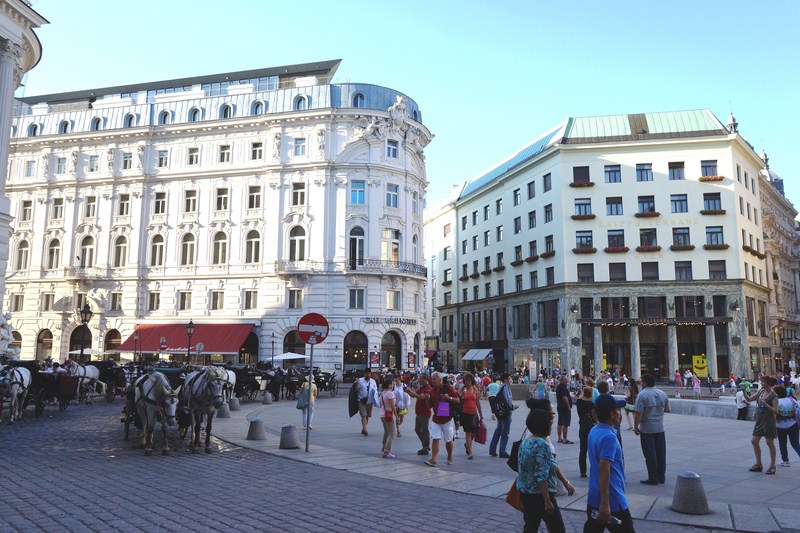
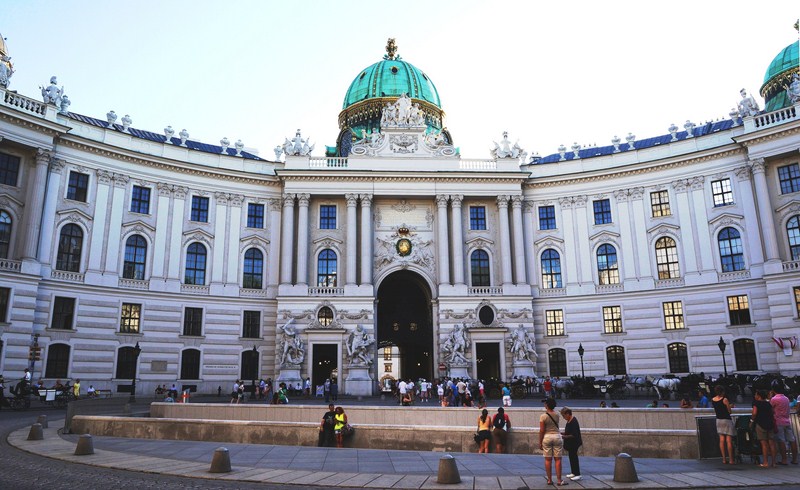
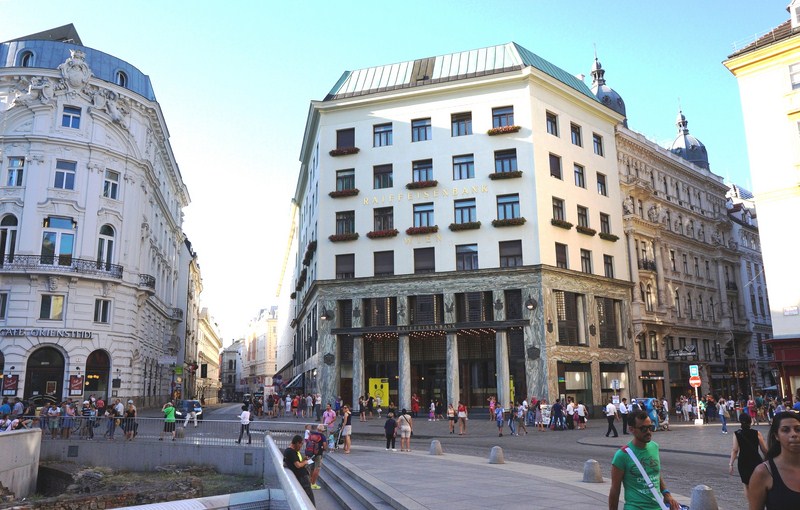
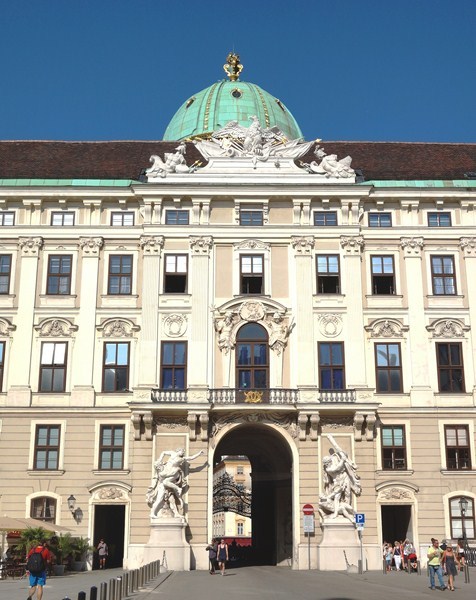
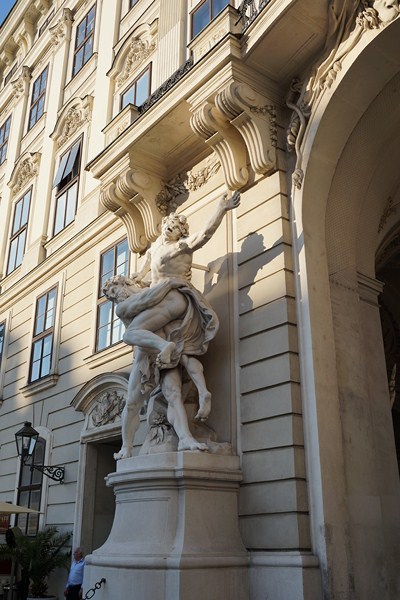
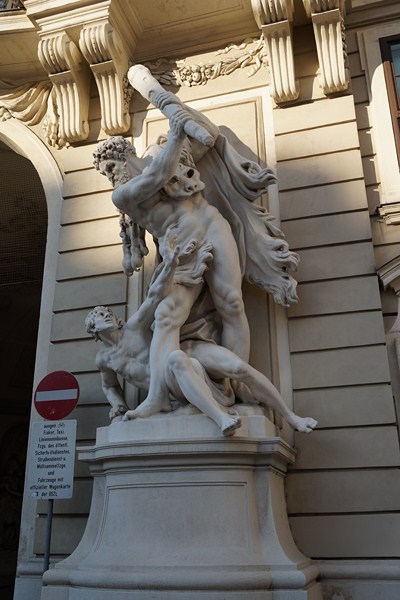
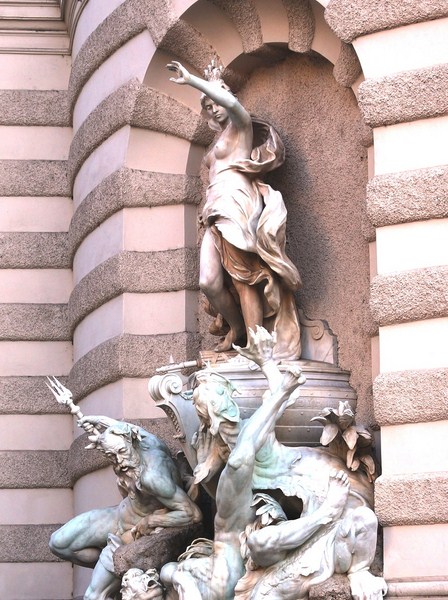
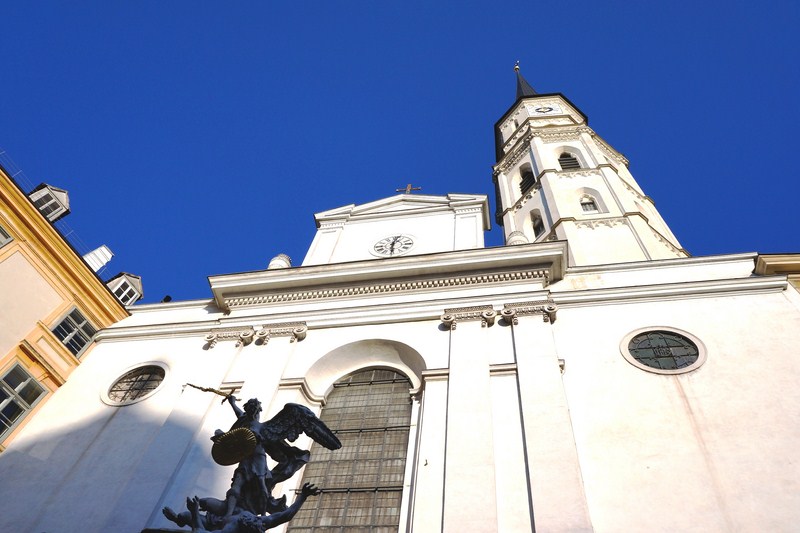
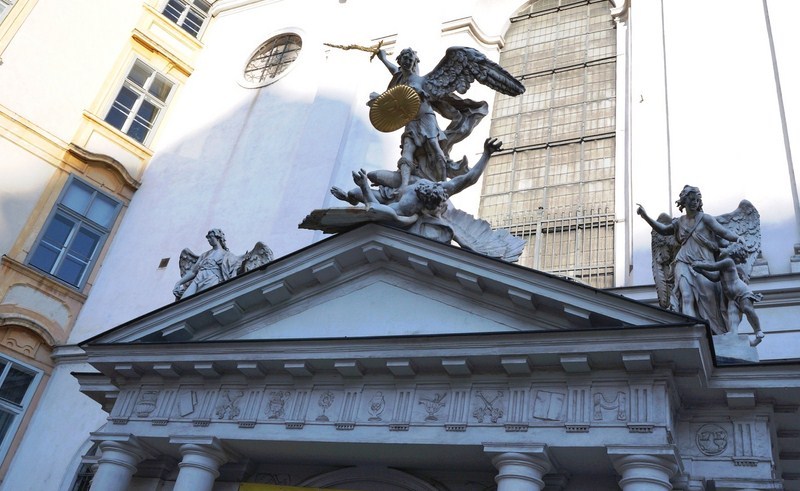
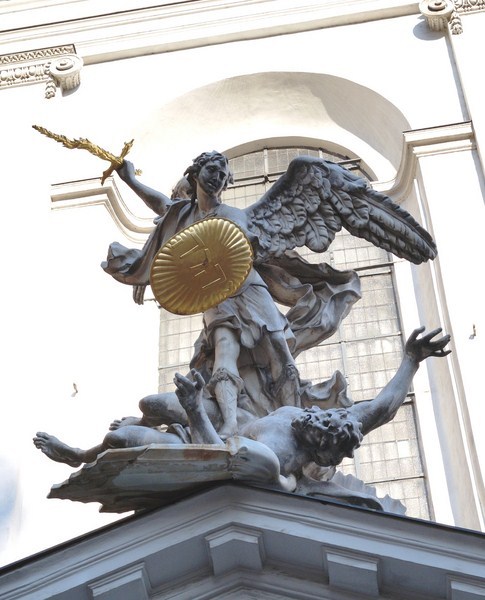
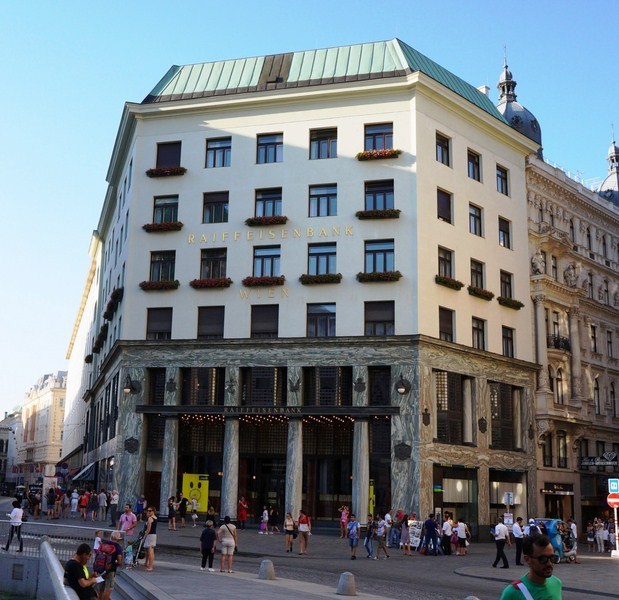
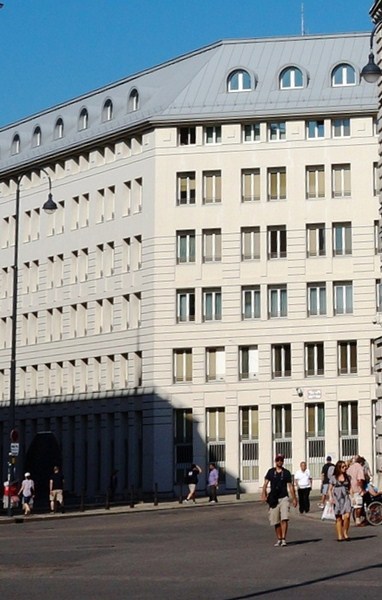
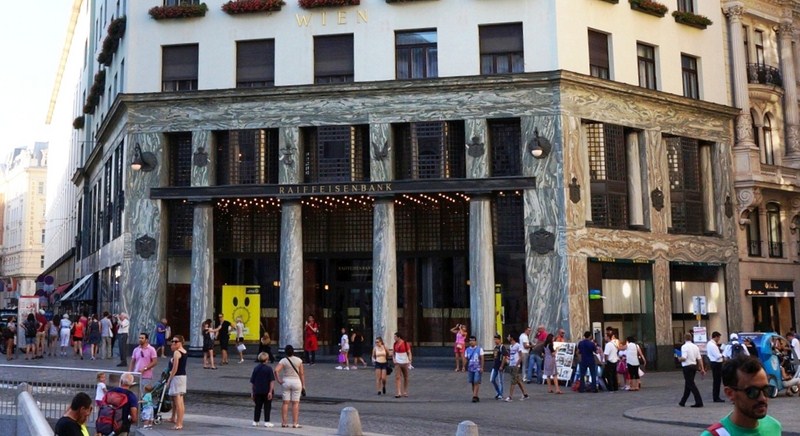
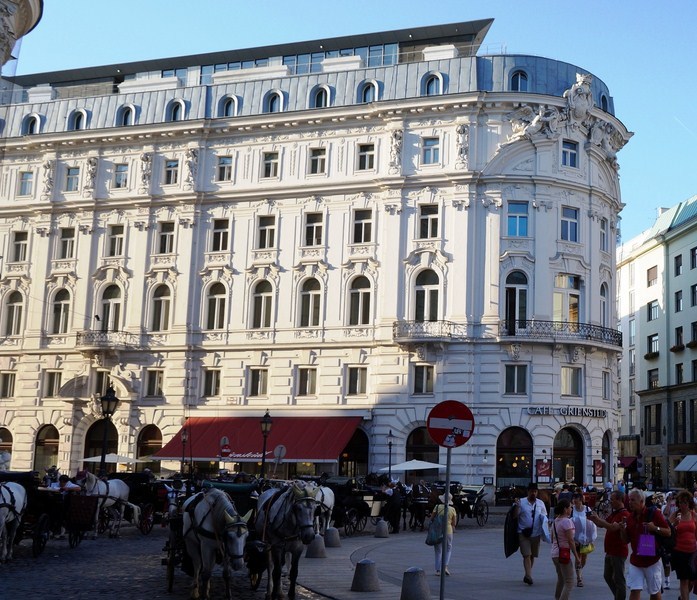
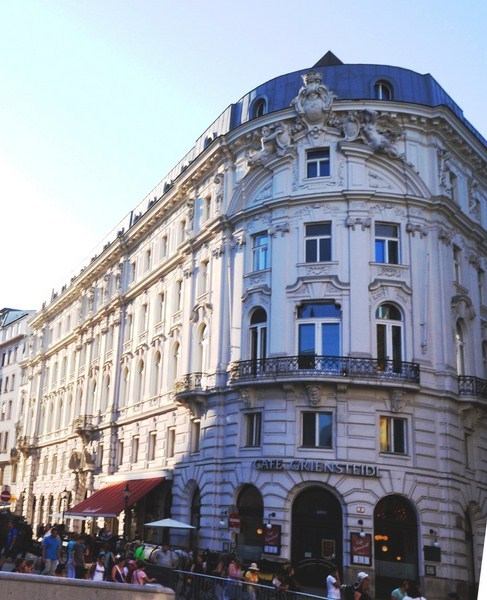

Pingback: Roman Ruins (Vienna, Austria) – B.L.A.S.T. – Live Life to the Fullest ……… Don't Stay Put